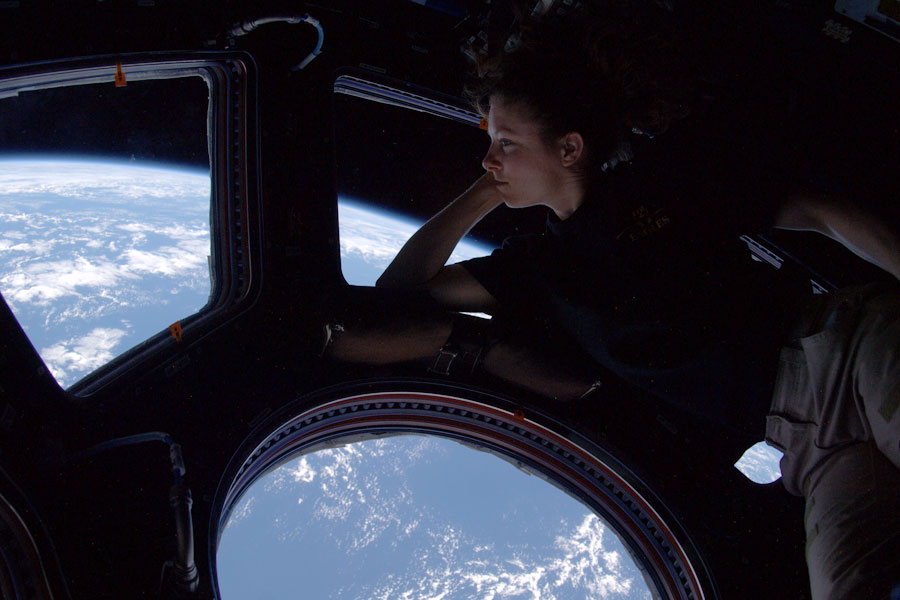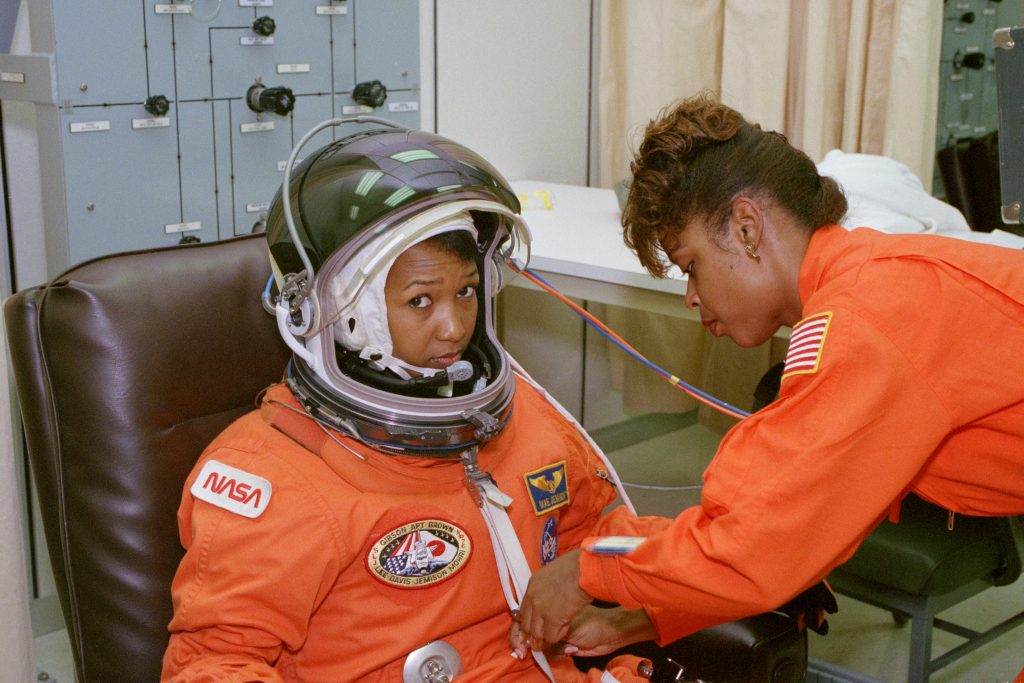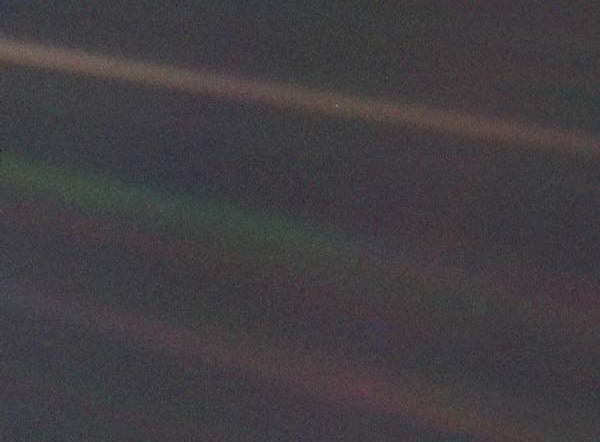Anthropologists in Outer Space
Anthropologists studying outer space might sound like fringe science, like something from “The X-Files” or some “ancient aliens” TV show, but we have been studying outer space as long as we’ve been studying people whose lives are influenced by it. In the fields of archaeoastronomy (how people understood the sky in the past) and ethnoastronomy (current cultural perceptions of the sky), scholars study how humans throughout history have looked up to the sky and wondered where we come from, why we’re here, and where we’re going. “All human cultures have a sky,” notes astronomer and archaeologist Clive Ruggles, and throughout human history our relationships with the cycles of stars and planets in that sky have influenced human activities, including agriculture, religion, literature, and art.
Today we not only look at the stars, we send spacecraft to investigate outer space and plan for human habitation on other worlds. The United States and the Soviet Union first sent animals up in rockets in the 1940s, and in 1961 Yuri Gagarin became the first human to travel to space. By 1969, humans had walked on the moon. Soon after, anthropologists were discussing the problem of how to study emerging cultures of space—a place few people had even been to. In the 1970s, anthropologist and futurist Magoroh Maruyama organized a series of discussions on outer space at the annual American Anthropological Association meetings and the International Congress of Anthropological and Ethnological Sciences. These meetings led to the publication of the 1975 book “Cultures Beyond the Earth: The Role of Anthropology in Outer Space.”
In the 1980s, anthropologist Ben Finney turned his eye to space. He combined his experience in the U.S. Navy and the aerospace industry with his anthropological research on how Polynesian people could have crossed the Pacific Ocean. In 1994 anthropologist Roland A. Foulkes drew from this earlier work by Maruyama, Finney, and other anthropologists in his essay “Why Space? An Anthropologist’s Response.” Foulkes even talked about possible names for the field of anthropology that studies space, suggesting astroanthropology, exoanthropology, aerospace-anthropology, or extraterrestrial anthropology.
The call for anthropologists to study outer space was revived in 2009 when anthropologists David Valentine, Valerie Olson, and Debbora Battaglia published a commentary in Anthropology News called “Encountering the Future: Anthropology and Outer Space.” Since “being earthbound is not a limitation” for humans, they argued, it shouldn’t be for anthropologists either.
Over the last decade, anthropologists studying space have written about dozens of topics, including the debate over Pluto’s status as a planet (Lisa Messeri, University of Virginia); how we respond to the threat of an asteroid hitting Earth (Valerie Olson, University of California, Irvine); the diaries kept by cosmonauts while they lived in space (Debbora Battaglia, Mount Holyoke College); new companies and communities in the private space-exploration industry (David Valentine, University of Minnesota); the search for extraterrestrial intelligence (Kathryn Denning, York University); and the science of studying extraterrestrial life (Stefan Helmreich, MIT).
There is even an archaeology of outer space. At Flinders University in Australia, archaeologist Alice Gorman studies the debris we leave in space, from old satellites orbiting the earth to spacecraft, robots, and even shadows on the moon. In her TED talk Gorman explains how the stuff we think of as useless “space junk” actually has value as part of our cultural heritage.
It takes imagination to think like this. Gorman uses her expertise in archaeology and anthropology to imagine how a piece of technology from our recent history could be an important artifact in the future. Work like this inspires me to wonder what human culture might look like in the future—in one hundred, one thousand, or even ten thousand years. This kind of future-aware anthropology draws from both science and science fiction. And in turn, science-fiction authors such as Ursula K. Le Guin, Octavia Butler, Samuel Delany, Phillip K. Dick, and Frank Herbert are all doing speculative anthropology when they use their knowledge of life here on Earth to write fictional works about people, cultures, and landscapes elsewhere and otherwise—on other worlds and in possible futures.
Science fiction has also been an inspiration for space scientists and astronauts. Dr. Mae Jemison, the first woman of color in space, was inspired as a child when she saw Nichelle Nichols playing Lieutenant Uhura on the bridge of the Enterprise in the original “Star Trek” television series. Science fiction also serves as a way of thinking about some of the anthropological problems of both Earth and outer space. What sort of worlds do we imagine might be out there around other stars? What kinds of life, culture, cities, spacecraft, philosophies, and religions might extraterrestrial civilizations have? I also like the idea of turning this extraterrestrial gaze back toward ourselves to ask, What would Earth look like to us if we were looking at it from another world?
In February 1990, at the request of Carl Sagan, the Voyager 1 spacecraft turned around its camera as it was about 3.7 billion miles (5.95 billion kilometers) away and took a series of photos, including this one, of Earth.
This now famous photo captured an image of our home world as nothing more than that small dot in a beam of sunlight at the top center. Sagan later wrote about this photo in his 1994 book “Pale Blue Dot”:
Look again at that dot. That’s here. That’s home. That’s us. On it everyone you love, everyone you know, everyone you ever heard of, every human being who ever was, lived out their lives. The aggregate of our joy and suffering, thousands of confident religions, ideologies, and economic doctrines, every hunter and forager, every hero and coward, every creator and destroyer of civilization, every king and peasant, every young couple in love, every mother and father, hopeful child, inventor and explorer, every teacher of morals, every corrupt politician, every “superstar,” every “supreme leader,” every saint and sinner in the history of our species lived there—on a mote of dust suspended in a sunbeam. …
… There is perhaps no better demonstration of the folly of human conceits than this distant image of our tiny world. To me, it underscores our responsibility to deal more kindly with one another, and to preserve and cherish the pale blue dot, the only home we’ve ever known.
Anthropologists have often studied what appear at first to be great differences between human communities living across this planet. There are long-standing and ongoing debates in anthropology about differences and similarities, universals and particulars—about how much we can really know or understand about other people’s lives, beliefs, views, and worlds. Anthropology of space can be another way of thinking about these questions. What might we see if we change the scale of the anthropological perspective, imagine ourselves from elsewhere, and look at Earth as a whole from space? For all our apparent differences, perhaps visitors from another world would look down at this small blue planet we live on and think that we’re all quite similar after all.


































